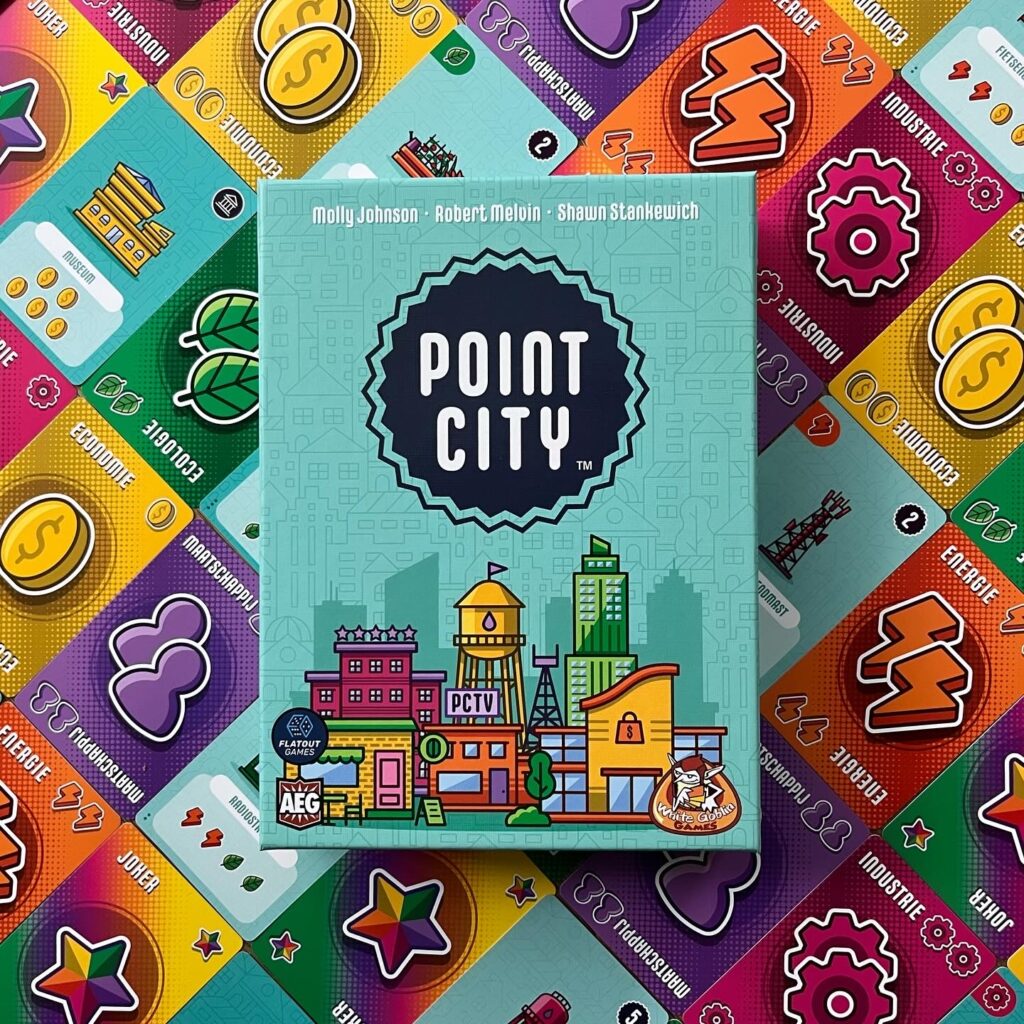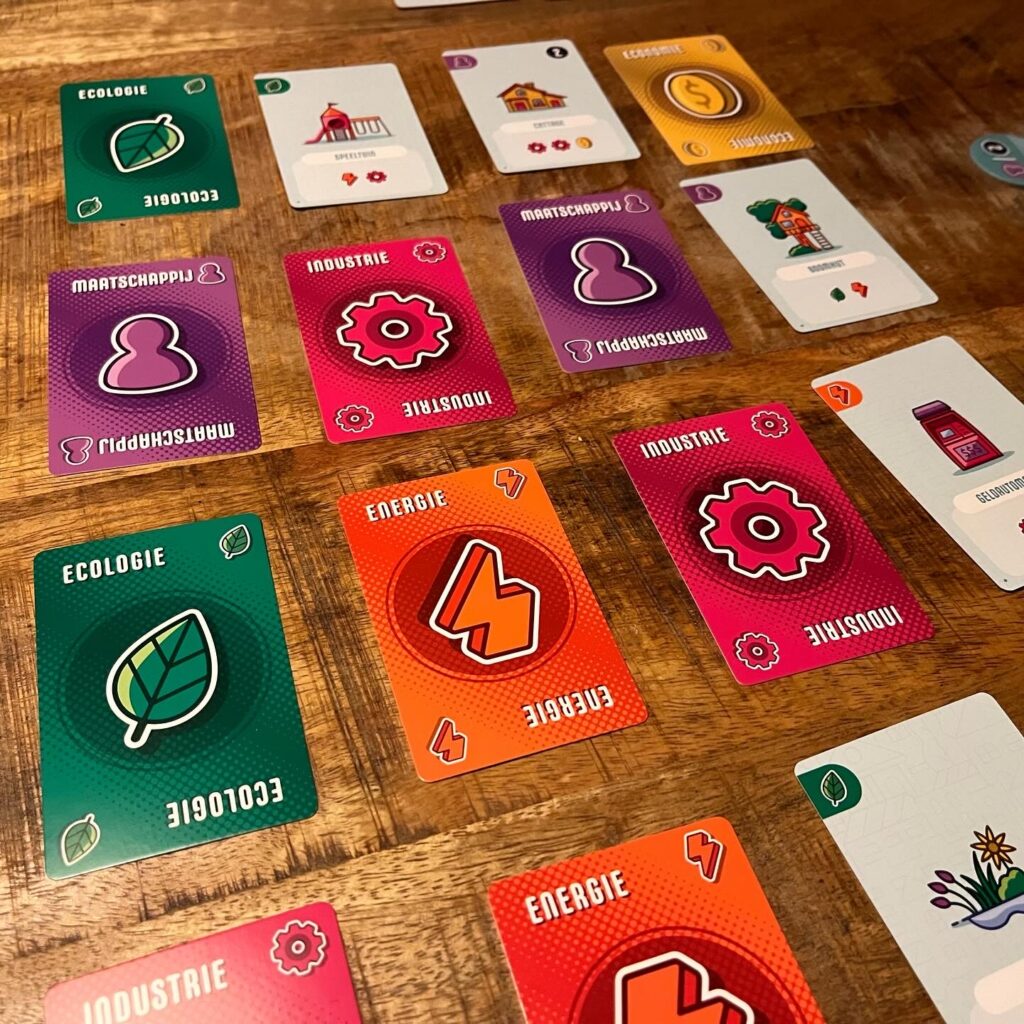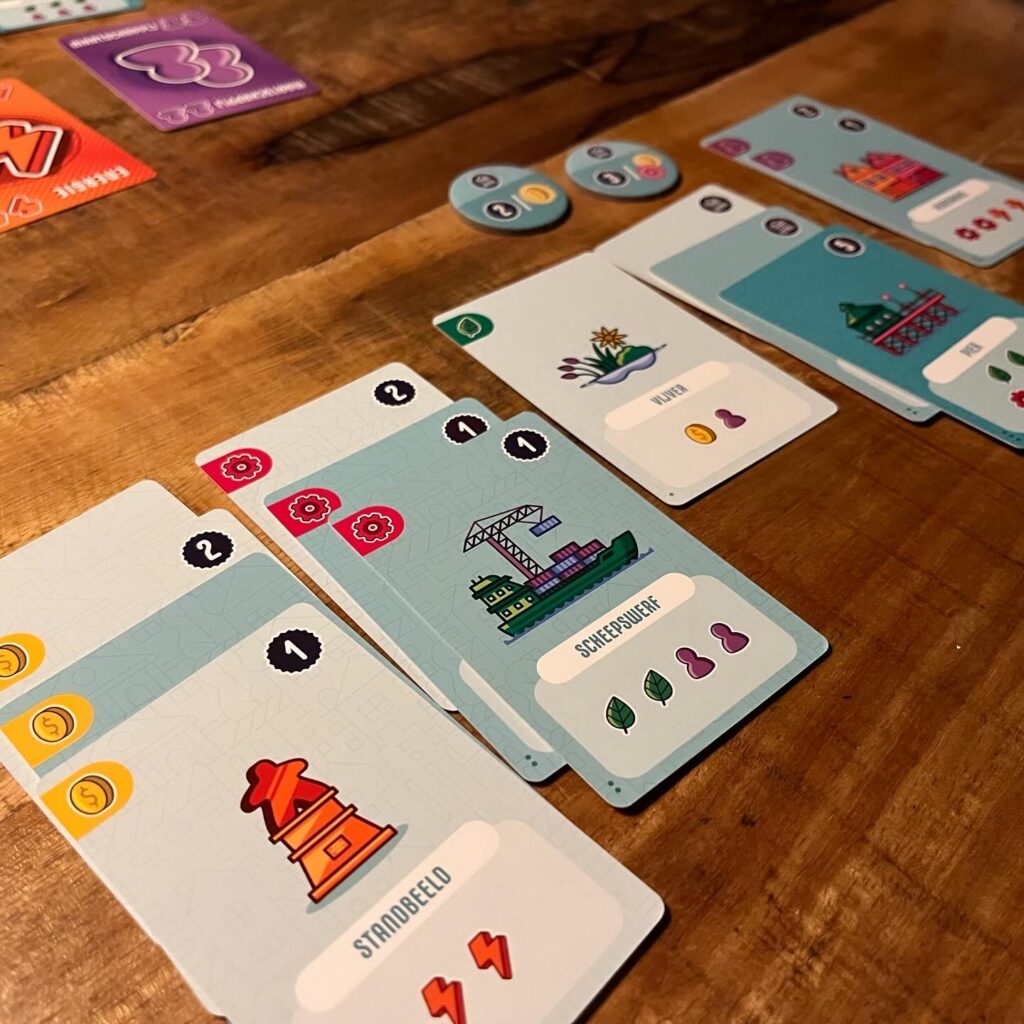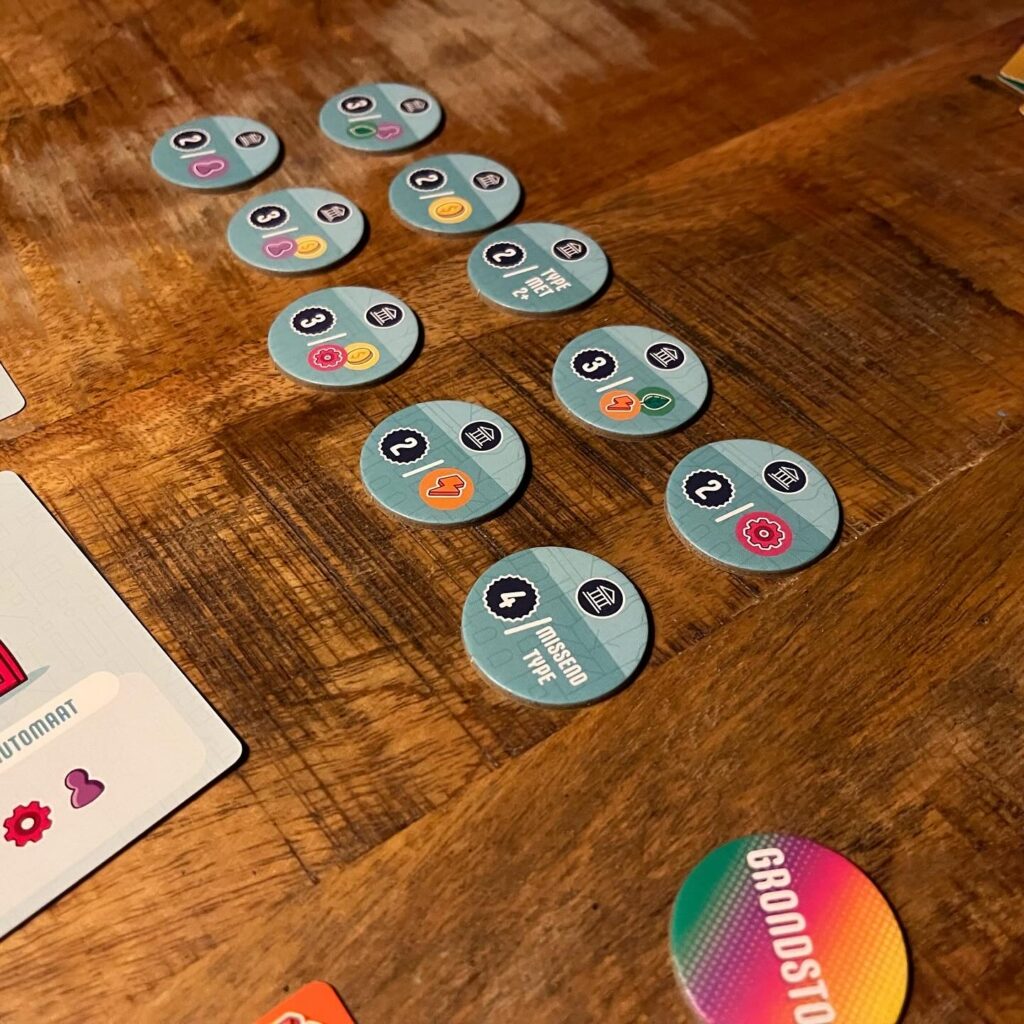What’s the similarity between a city and a salad? A lot of green makes it a lot healthier! We are moving away from the delicious salads from Point Salad with Point City and are now trying to build a sustainable city. No more carrots and cabbage, but still a whole lot of points.
Background
Point Salad is a familiar term to the inhabitants of the board gaming world. It refers to games in which you can collect points in many different ways and where there is therefore a lot of calculation involved at the end of the game.

The smooth card game Point Salad took on the aforementioned, and players in this game not only had to collect vegetable cards, but also the ways to score points. To this end, the game included double-sided cards with a vegetable to collect on one side and a unique way to score points with your collected vegetables on the other. During the game, each time you had the choice and consideration to collect a certain type of card.
Point City is the spiritual sequel to Point Salad. Again a lot of ways to score points, double-sided cards to collect, colorful design, but otherwise completely new gameplay compared to Point Salad.
Gameplay
A certain amount of level 1, level 2 and level 3 cards are placed in the draw pile depending on the number of players. In the center of the table, 16 cards are drawn from the deck. At the beginning of the game, only resources lie face-up. A number of building chips are placed next to the grid of cards.

In Point City, in addition to a resource on one side, cards contain a building on the other side. Players choose two adjacent cards from the grid each time. Resources players place in their hand and buildings they place in front of them. Buildings can only be taken if you have the right amount of resources. For this you can discard collected resource cards, but with collected buildings you have a number of permanent resources at your disposal. Players can alternatively take two cards from the draw pile.
After players take cards from the grid, they complete the grid. On the spot where the resource used to be, a building appears and vice versa. This creates a dynamic market with an ever-changing composition of available cards.


Some building cards show points and others show a symbol. When players take a card with this symbol they may take one of the building tokens. Each token shows a way to accumulate bonus points. At the end of the game (once the grid can no longer be replenished), each player adds his points from building cards and building tokens and the player with the most points wins.
Conclusion
Just like Point Salad, Point City is a wonderfully smooth and refreshing card game with unique and dynamic gameplay in which players can earn points in different ways and thereby easily change their tactics during the game. There is still plenty of points that you can gather and it is rather tense and balanced right until the actual counting of the points.




